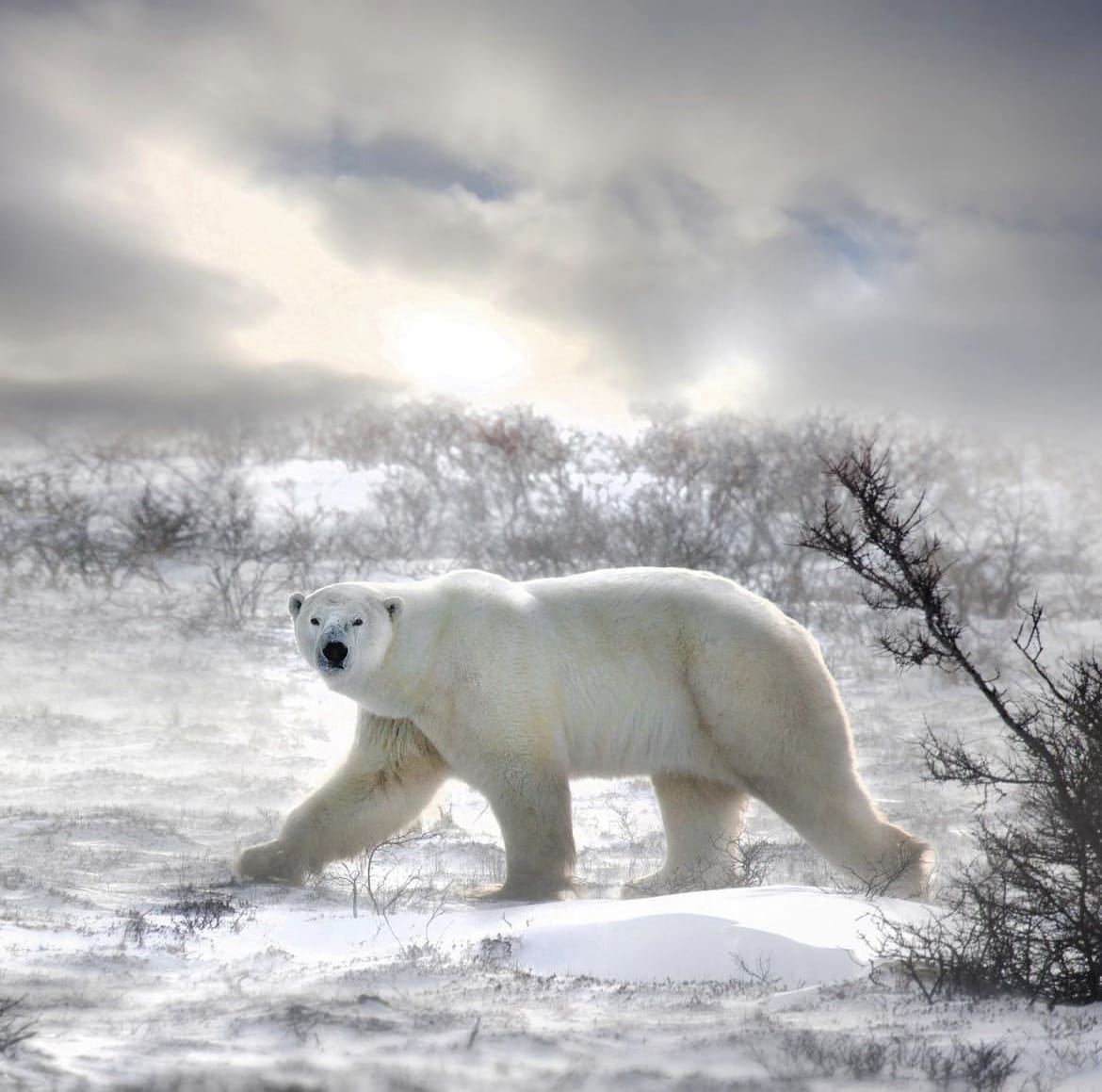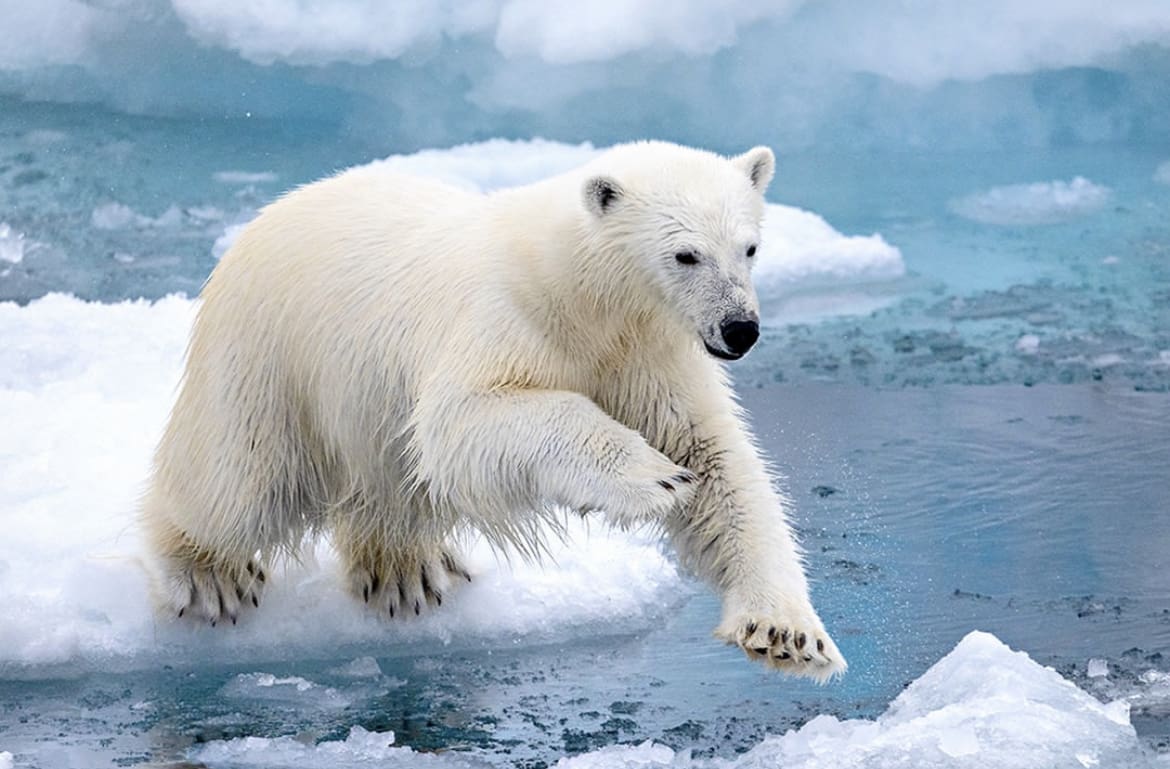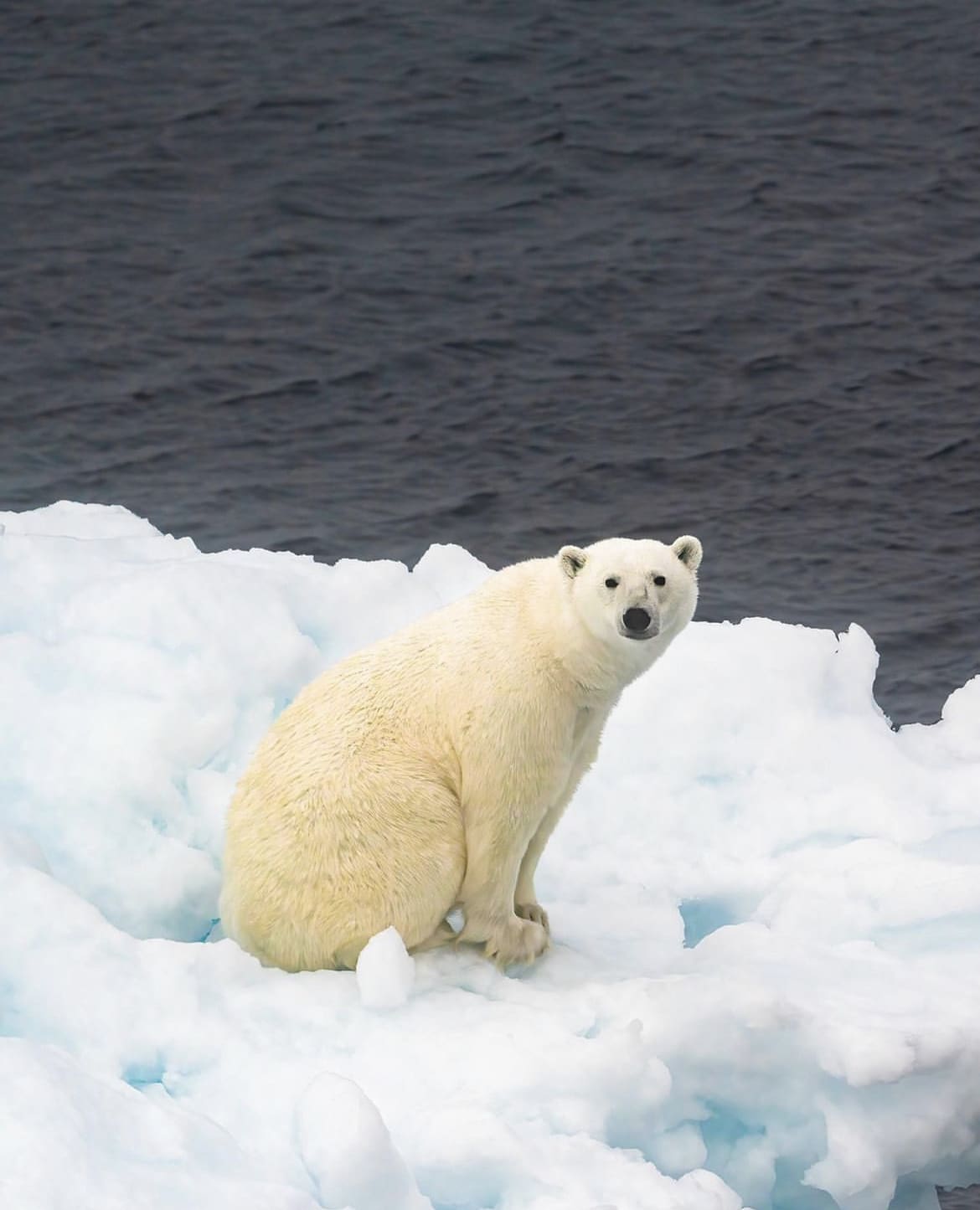Polar bears are one of the world’s most recognizable and beloved animals. With their distinctive white fur and powerful build, these majestic creatures have captured the imagination of people for generations. But beyond their impressive appearance, polar bears are also fascinating creatures with complex behaviours and adaptations that allow them to thrive in one of the harshest environments on Earth – the Arctic.
In this article, we will delve deeper into the world of polar bears, exploring their biology, ecology, and conservation status. From their hunting habits to the challenges they face in a rapidly changing Arctic, this article aims to provide a comprehensive overview of these incredible creatures. So, whether you’re a seasoned wildlife enthusiast or simply curious about polar bears, keep reading to learn more about these fascinating animals.
What is a Polar Bear?
A polar bear (Ursus maritimus) is a large carnivorous bear species that is native to the Arctic regions of the Northern Hemisphere. They are known for their bright, white fur, which provides excellent camouflage in their snowy habitat and helps them blend in with their surroundings. Polar bears are powerful swimmers and excellent hunters, primarily feeding on seals and other marine mammals. They are well-adapted to life in the Arctic, with thick fur, a layer of fat for insulation, and large paws that help them navigate on ice and snow. Polar bears are considered a vulnerable species due to declining populations and loss of sea ice habitat due to climate change. Conservation efforts are underway to protect and preserve polar bear populations, which play a vital role in their Arctic ecosystem.
Polar Bears vs Grizzly Bears
Polar bears and grizzly bears are two different species of bear that have a number of distinct differences. Polar bears are native to the Arctic and have a stocky build with fur that is either white or a light cream colour. They mainly feed on seals and other marine mammals and are known for their excellent swimming abilities.
On the other hand, grizzly bears are native to North America and have a varied diet that includes both plants and animals. They have a distinctive hump of muscle on their shoulders and their fur can range in colour from light blond to nearly black. In terms of size, male polar bears are typically larger than male grizzly bears.
Polar bears are solitary hunters and spend a lot of time on sea ice, while grizzly bears are omnivores and generally live on land. Both species play important roles in their respective ecosystems.

Appearance
What do polar bears look like?
Polar bears are recognizable by their white fur. They have a stocky build, with a large head, a long neck, and powerful shoulders.
In addition to their white fur, polar bears have small ears, a short tail, and long, sharp claws that help them to grip and catch their prey. They have a keen sense of smell and good eyesight, which helps them to locate and hunt their food. They also have a layer of fat under their skin, which provides insulation against the cold and helps them to survive in their harsh Arctic environment.

How big are polar bears?
Polar bears are among the largest land carnivores in the world. Adult male polar bears can weigh between 400 to 600 kilograms (880 to 1,320 pounds) and grow up to 2.4 meters (8 feet) in length, with some individuals reaching even larger sizes. Females are typically smaller, with weights ranging from 300 to 400 kilograms (660 to 880 pounds) and lengths from 1.8 to 2.0 meters (6 to 6.6 feet).
It’s important to note that the size of polar bears can vary greatly depending on factors such as age, gender, and population. For example, polar bears from the western Hudson Bay region are generally smaller than those from other populations due to the limited availability of food in their habitat. However, overall, polar bears are among the largest land predators and have a massive, powerful build that enables them to hunt and thrive in their Arctic environment.

Behaviour
What do polar bears eat?
Polar bears are carnivores and their primary food source is seals. They mainly hunt ringed seals and bearded seals, but will also eat other marine mammals such as walruses and beluga whales, as well as fish and seabirds.
In the spring and summer months when the sea ice is melting and breaking up, polar bears will also feed on young seals that are unable to escape from their breathing holes in the ice. During the winter, when the sea ice is more solid and stable, polar bears will use their powerful front claws to break through the ice to reach seals that are resting or sleeping on the ice floes.
Polar bears have a unique digestive system that allows them to extract the maximum amount of nutrients from their prey. They have a low metabolic rate and can go for long periods of time without food, relying on their fat stores to survive until they can hunt again. However, due to the decline of sea ice in the Arctic, the availability of their preferred food source, seals, has decreased, causing some polar bear populations to decline as well.

How do polar bears hunt?
Polar bears hunt mainly by stalking and waiting for their prey, usually seals, to come to the surface of the sea ice. They will also use their powerful sense of smell to locate seals that are resting or sleeping on the ice, and will use their sharp front claws to break through the ice to reach them.
When hunting, polar bears are patient and methodical, using their white fur to blend in with the surrounding snow and ice to sneak up on their prey unnoticed. Once they have located a seal, they will use their powerful front legs to swipe at it, stunning it or killing it with a bite to the neck.
Polar bears are also known to hunt by diving into the water and swimming after seals. They have large front paws that are partially webbed, making them powerful swimmers, and they can use their front claws to grab seals that are in the water.
In addition to hunting on the sea ice, polar bears will also feed on carrion, or dead animals, when the opportunity arises. This helps to provide them with essential nutrients when their preferred food source, seals, is not readily available.

Habitat & Range
Where do polar bears live?
Polar bears are native to the Arctic region and are primarily found in the northern parts of Canada, Greenland, Norway, and Russia, as well as Alaska in the United States. These majestic creatures rely on the sea ice for their habitat and source of food, primarily seals. As the sea ice forms and melts with the changing seasons, polar bears must adapt their behaviour and movement accordingly. During the summer months, they may retreat to land while they wait for the sea ice to re-form.
However, the declining sea ice due to climate change is becoming a major threat to the survival of polar bear populations. The sea ice provides not only a platform for hunting, but also serves as a breeding ground and nursery for these animals. The decline of sea ice is having a significant impact on the distribution and survival of polar bear populations, making it a critical issue for conservation efforts.
Conservation status
How many polar bears are left in the wild?
The current global population of polar bears is estimated to be between 22,000 and 31,000 individuals. However, this number is considered to be an estimate as they live in incredibly vast regions and are difficult to survey.
It’s also important to note that the population of polar bears is not evenly distributed across their range, and some populations are declining while others are stable or increasing.
Conservation efforts are ongoing to protect polar bear populations and their habitat, and to mitigate the impacts of climate change on these iconic Arctic predators.

Are polar bears endangered?
According to the International Union for Conservation of Nature (IUCN), polar bears are currently considered to be “vulnerable”. This classification indicates a high risk of extinction in the wild.
Efforts are in place to protect these magnificent creatures and their habitat. These efforts include restrictions on hunting, preservation of habitat, and actions to reduce the impact of greenhouse gases, which contribute to the deterioration of the Arctic and its wildlife. Conservation of polar bear populations is crucial to ensure their survival and preserve this iconic species for future generations.
Threats to polar bears in the wild
The declining trend in polar bear populations is due to various reasons including hunting, loss of habitat, and most notably, climate change. The melting of Arctic sea ice has a major impact on polar bear survival as it affects their primary food source, seals.
Safari
Where can you see polar bears in the wild?
Polar bears are native to the Arctic, and can be found in countries such as Canada, Greenland, Norway, Russia, and the United States (Alaska). If you’re interested in observing polar bears in the wild, some of the best places to go include:
- Churchill, Manitoba, Canada: This town is known as the “Polar Bear Capital of the World” and is a popular destination for polar bear viewing. In the fall, large numbers of polar bears gather here as they wait for the Hudson Bay to freeze over so they can hunt for seals.
- Svalbard, Norway: This archipelago located between Norway and the North Pole is home to a large population of polar bears, as well as other Arctic wildlife such as walruses, reindeer, and Arctic foxes.
- Wrangel Island, Russia: This remote island in the Arctic Ocean is a UNESCO World Heritage site and is home to one of the largest populations of polar bears in the world.
When visiting these locations, it is important to follow responsible wildlife viewing guidelines and to be cautious around polar bears, as they are powerful and potentially dangerous animals. It is recommended to go with a local guide or tour operator who is knowledgeable about polar bears and can provide a safe and responsible wildlife viewing experience.

Facts About Polar Bears
- Polar bears are excellent swimmers: Polar bears have webbed feet and powerful front claws, making them excellent swimmers. They are capable of swimming long distances, sometimes over 60 miles (100 km) at a time, in search of food or to move from one piece of ice to another.
- Polar bears have a highly specialized diet: Polar bears primarily eat seals, and have adaptations such as powerful front claws and a keen sense of smell to help them catch their prey. They will also feed on fish, birds, and other small mammals if seals are scarce.
- Polar bears are well-adapted to their Arctic environment: Polar bears have thick fur and a layer of fat that helps insulate them from the cold and provides buoyancy in the water. Their white fur also helps them blend in with their snowy surroundings and makes them nearly invisible to their prey.
- Polar bears are excellent hunters: Polar bears are skilled hunters and use a variety of hunting techniques to catch their prey. They will stalk and ambush seals at breathing holes in the ice, use their powerful front claws to break through the ice to catch seals resting on the surface, and hunt young seals on the ice.
- Polar bears are vulnerable to climate change: Polar bears rely on the sea ice to hunt and travel, and the melting of the Arctic sea ice is having a significant impact on their populations. As the sea ice continues to melt, polar bears are facing reduced access to their food sources and are at risk of starvation.

myths About Polar Bears
- Polar bears are pure white: While it may appear that polar bears are pure white, their fur actually has a yellowish or cream-colored tint. This is because the white fur reflects light, making it appear brighter and whiter.
- Polar bears live only in the North Pole: While the majority of the world’s polar bear population lives in the Arctic, they can be found in other regions as well. Polar bears are found throughout the Arctic, including Canada, Greenland, Norway, Russia, and the United States.
- Polar bears are aggressive towards humans: Polar bears are generally shy and will avoid contact with humans whenever possible. However, if a polar bear perceives a person as a threat, it may become aggressive and attack. This is why it’s important to exercise caution when traveling in polar bear habitats and to follow safety guidelines.
- Polar bears are only active at night: Polar bears are active both during the day and night. However, they are more active at night in the summer months, when the sun never sets, and more active during the day in the winter months, when the sun never rises.
- Polar bears are not threatened: Polar bears are facing numerous threats, including habitat loss, climate change, and hunting. In some areas, polar bear populations have declined significantly in recent years, and the species is considered vulnerable by the International Union for Conservation of Nature (IUCN).
